One Day in Pisa: An Itinerary for First-Timers in 2025

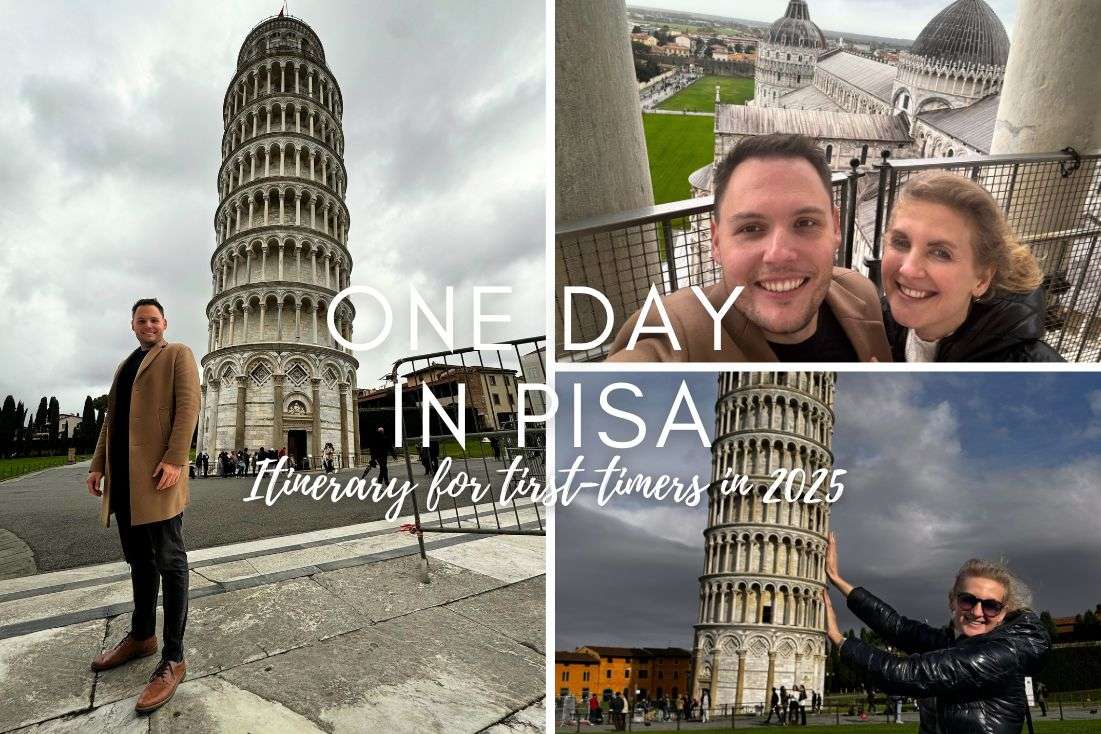
Ready to explore the majestic city of Pisa in just one day? After multiple visits over the years, including my most recent one in November 2024, I’ve put together this plan to make your life easier and help you see the best of Pisa. I’ve included top tips to ensure a smooth visit while saving you time and money.
I’ve been to every single one of these places myself, so trust me when I say this itinerary is battle-tested. Every tip, route, and recommendation in this guide comes straight from my own adventures, not some secondhand brochure. So, if you’re ready to follow in my well-worn (but still stylish) travel shoes, let’s get started!
What to see in Pisa in one day?
Stop 1: Leaning Tower of Pisa
Stop 2: Cathedral of Pisa (Il Duomo)
Stop 3: Baptistery
Stop 4: Camposanto
Stop 5: Museo Delle Opera di Duomo
Stop 6: Fallen Angel & Sinopie Museum
Lunch in the Center
Stop 7: Knights' Square (Piazza dei Cavalieri)
Stop 8: Arno River Walk
Not-So-Hidden Gems
Stop 9: Santa Maria della Spina
Stop 10: Borgo Stretto
Stop 11: Chiesa di Borgo
Bonus Stop: Pisa Seaboard
But before we dive into all the details, let’s go over some money- and time-saving tips that I found incredibly useful—ones I wish I had known before my first visit!
Map of Pisa tourist attractions
Here is a map of Pisa with the top places to see:
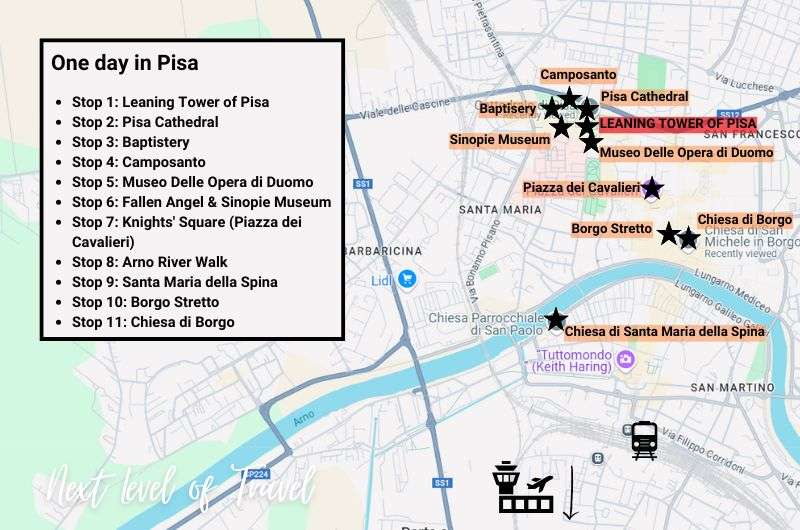
Everything is close together in Pisa, but you’ll need a car if you want to hit the bonus stop: the seaboard!
Sometimes, all you need to do is take the first step... I've filtered out the best hotels in Pisa for you
Save it for yourself to come back to later, or share with your friends on social media!
When is the best time to visit Pisa?
I felt that Pisa shows its best side in the fall with mild weather and fewer tourists around. Piazza dei Miracoli is still absolutely packed with tourists, but the city becomes more peaceful after the summer rush, and temperatures are perfect for walking around. An additional bonus is that I found better hotel deals, and you get a more authentic feel of the city from November through March.
Recommended hotel: Hotel Villa San Michele
When to visit Pisa (season-wise)
Pisa's quieter side emerges between November and March. My late November visit showed that popular spots still draw crowds, but the atmosphere feels more relaxed to enjoy the city's treasures.
Spring and fall give you the best conditions to walk around. You'll find it easier to climb the Leaning Tower's 294 steps in these mild temperatures. The weather stays nice, and the crowds remain manageable during these shoulder seasons.
Tourist numbers peak in summer with prices going up too. The warm weather might look tempting, but heavy crowds can take away from your experience at major sites. The wait time to climb the tower increases a lot during these months.
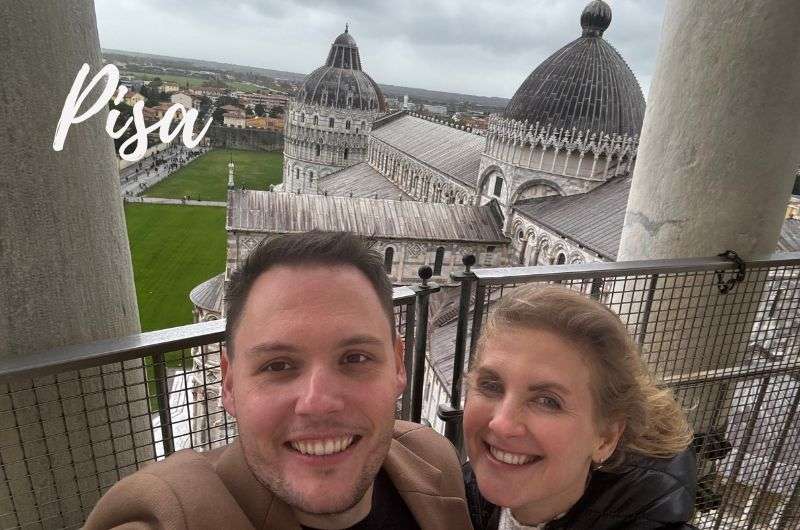
Spring and fall are ideal for exploring without the summer crowds
What time of the day is the best: Morning vs evening vibes?
Getting there before 8:30 am has clear benefits. The morning light creates beautiful shadows across Piazza dei Miracoli's green lawns—perfect for photos. You'll also find convenient parking spots near the main attractions.
The Cathedral welcomes visitors until 8 pm, which makes evening visits possible. The white marble buildings glow in the golden afternoon light, creating stunning photo opportunities. Fewer tourists visit at this time, so you can explore more peacefully.
Book your tower climb early in the morning or late in the afternoon to get the best experience. These times offer better lighting for photos and shorter lines. The tower's staircase becomes an interesting wind tunnel on breezy days, which adds to your experience.
Top tip: The first time I visited Pisa, I booked the tower at 11 am, and it was a mistake as the Piazza dei Miracoli was so crowded that I almost could not take any meaningful pictures.
Note that you should arrive 15 minutes before your scheduled tower time slot. Strict visitor limits make timing vital, especially in peak hours when slots fill up fast. Booking your combined ticket a month ahead will give you your preferred time slot.
Getting around Pisa and getting to Pisa
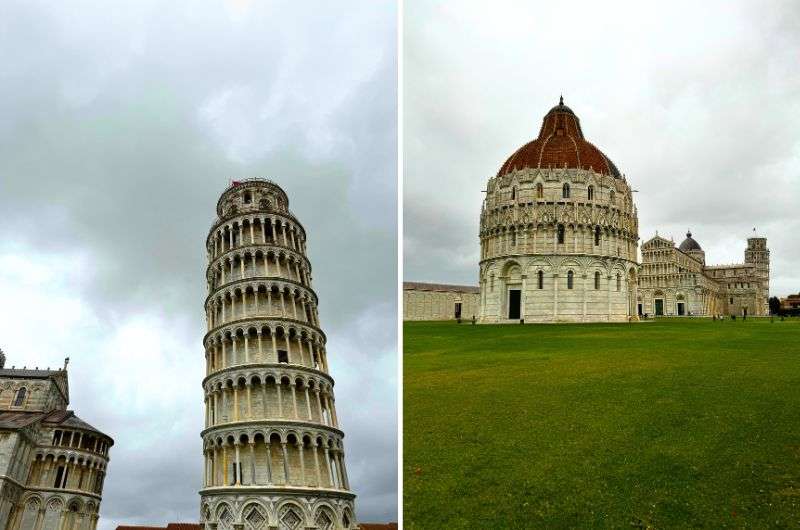
Getting around Pisa is easy—compact, walkable, and stress-free
Pisa is a compact city, and it is very walkable in any weather. Most attractions sit within a 20-minute walking radius of the historic center, which makes it easy for first-time visitors to find their way around.
From airport to city center
I have always visited Pisa by car as Italy is very close to my home country. But if you arrive by plane, Pisa’s international airport is actually a good airport to start your Italy tour from as well.
Downtown Pisa lies just 2 km (1.2 mi) from Galileo Galilei Airport, with several ways to reach it. The PisaMover, an automated shuttle service, connects the airport to Pisa Centrale station. It runs every 5-8 minutes from early morning until midnight. Taxis wait outside the terminal for late-night arrivals and charge reasonable rates to the city center.
Clear signs at Pisa Centrale station point you toward the historic center. You can reach the Leaning Tower with a pleasant 20-minute walk through charming city streets from there.
Driving and parking in Pisa
The best time to find parking near Piazza dei Miracoli is before 9:30 am. Parking spots close to main attractions cost EUR 2–3 per hour.
I came at 9.00 am during my last visit, and there were only very few spots left, and it was during shoulder season!
My top tips to save money and time:
- Use free Park and Ride facilities on the city outskirts
- Download the EasyPark app to find cheaper parking spots—I use this app everywhere in the EU
- Park in residential areas away from tourist zones
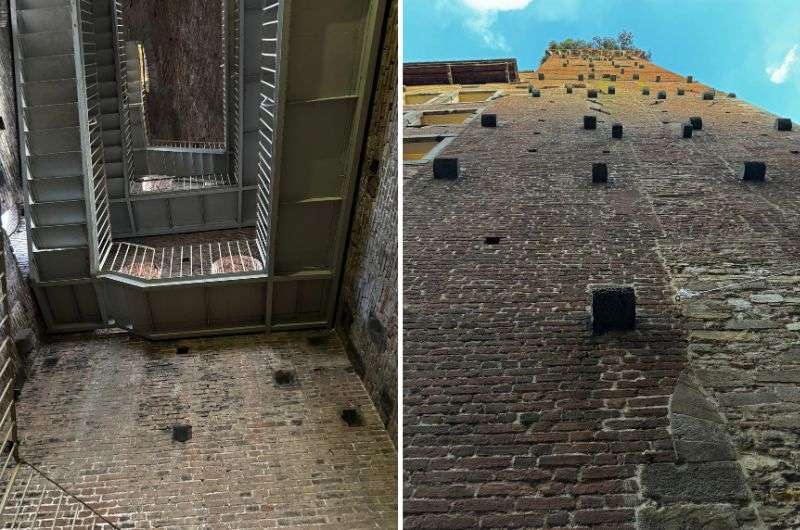
Walking through Pisa isn’t just about the Leaning Tower—these medieval streets have their own charm
Walking in the city
I was surprised on my first visit that The Leaning Tower stands at the city's edge, I mean almost in the fields. For some reason, I thought it was going to be in the center.
A beautiful route leads from Piazza dei Miracoli through medieval alleys to the Arno River. You can walk this path in 15 minutes along the charming Borgo Stretto and see authentic Pisan life.
The city has reliable pedestrian infrastructure with good sidewalks and clear crossings. The Arno River helps visitors stay oriented during their experience. Walking beats driving in the historic center, where narrow medieval streets often get congested with traffic.
How the Pisa combined ticket works
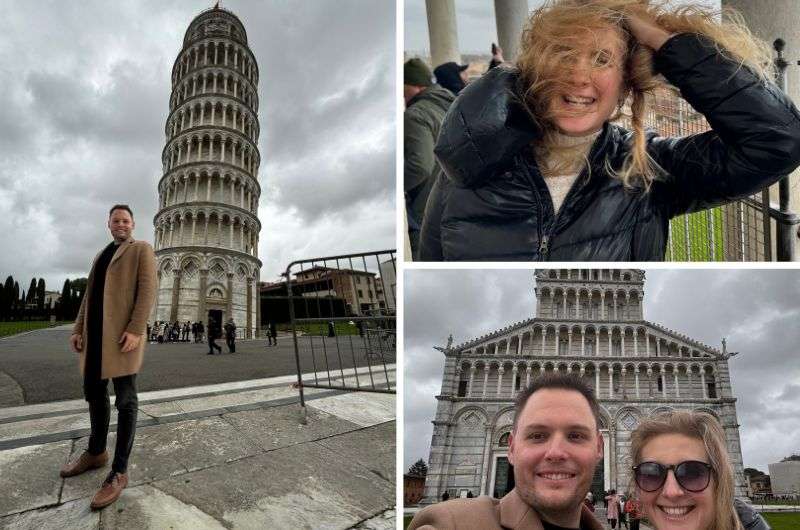
Explore Pisa with the combined ticket—five iconic sites, one pass
I bought the EUR 27 combined ticket one month ahead, and it gave me access to five amazing monuments on Piazza dei Miracoli. I searched for similar passes in all the Italian cities I visited, but I found the one in Pisa the most useful.
The pass lets you visit the famous Leaning Tower, Il Duomo (Cathedral), Baptistery, Camposanto, and the Sinopie Museum.
You'll need about three hours to explore these architectural wonders. Smart planning helps you make the most of your time. The Cathedral stays open until 8 p.m., so you can plan your visit around busy tourist hours.
I recommend booking the combined ticket well ahead of time because visitor numbers are limited. You should reserve at least a month in advance since tower climbing slots fill up fast. Digital tickets on your phone make entry smooth.
Top tips for the combined ticket:
- Really, book in advance. I checked before the visit whether I could change the time or date of the Tower visit, and it was booked at least 14 days ahead without any empty slots.
- Time slots for tower access are strict. Show up 15 minutes before your scheduled climb to avoid issues. The other monuments are more flexible with entry times during your three-hour window.
- They say you need to print your ticket. You don’t really need to. You are fine with having the PDF on the phone.
Remember to store your stuff
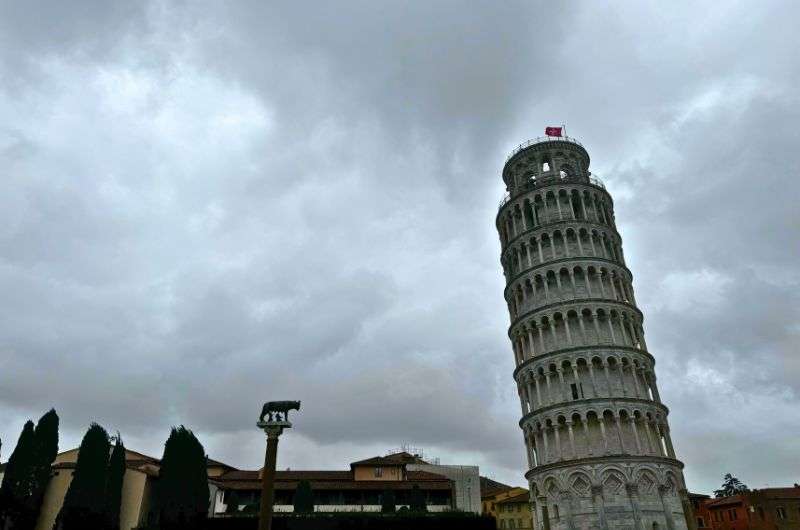
A cloudy day at the iconic Leaning Tower of Pisa — remember to store your bags in lockers before your climb
Storage rules are a vital part of your visit. You'll need to put your belongings in the lockers before climbing the tower. Bags, backpacks, and even coffee cups aren't allowed inside. Keep your locker ticket safe—you'll need it to visit other monuments later.
Fun fact: I had a bit of stress during my first visit, when I was surprised to get directed to the lockers just before entering the tower... I was able to shove my belongings into them just barely quick enough to make my entrance time.
The ticket system strikes a good balance between preservation and access. The tower limits visitor numbers to protect its structure. The other monuments let you explore at a more relaxed pace within your time slot.
Can I visit the Leaning Tower for free?
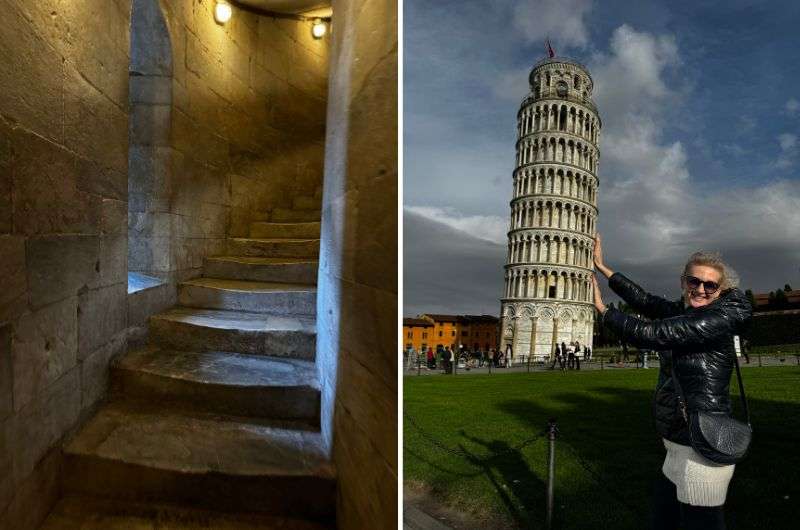
You can admire the Leaning Tower from the square for free, but climbing it requires a ticket (or combination pass)
Many first-time visitors ask about seeing the tower without paying. You can take photos and admire the Leaning Tower from Piazza dei Miracoli for free. But the combined ticket is worth the cost to see stunning interiors and get unique views from different spots.
My ultimate guide for one day in Pisa for 2025
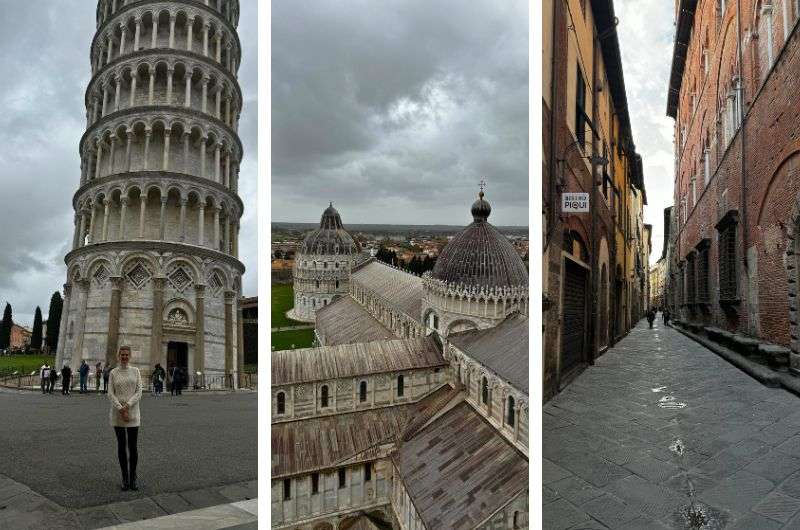
The Piazza dei Miracoli blew me away, and I keep coming back
I was not expecting anything from Pisa, and many of my friends told me they were underwhelmed by it. Honestly, I don’t understand that. I was absolutely stunned and think that Piazza dei Miracoli is one of the prettiest places in the world. I visit any time I have the opportunity.
A bit of a history fun fact: Pisa built its medieval fleet to defend against Saracen pirates, and after defeating them, they thought, "It would be a shame to let these ships go to waste," and so their expansion began. Among other things, they founded Akko and Jaffa in Israel. The 11th and 12th centuries were theirs; at the turn of the century, they were even stronger than Venice. Interestingly, Pisa was never conquered. Meanwhile, its politicians were naughty boys, often excommunicated by the Pope for their actions. They were a thorn in the side of many other city-states around them.
Morning: Piazza dei Miracoli
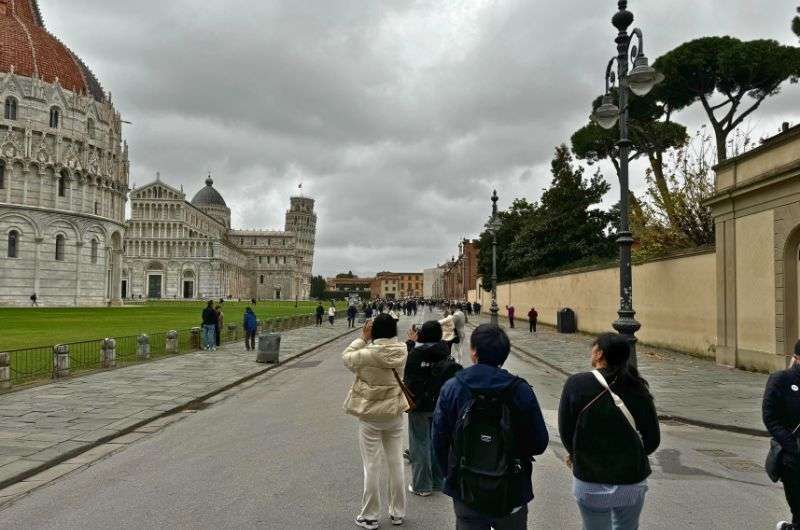
Approaching the iconic Piazza dei Miracoli
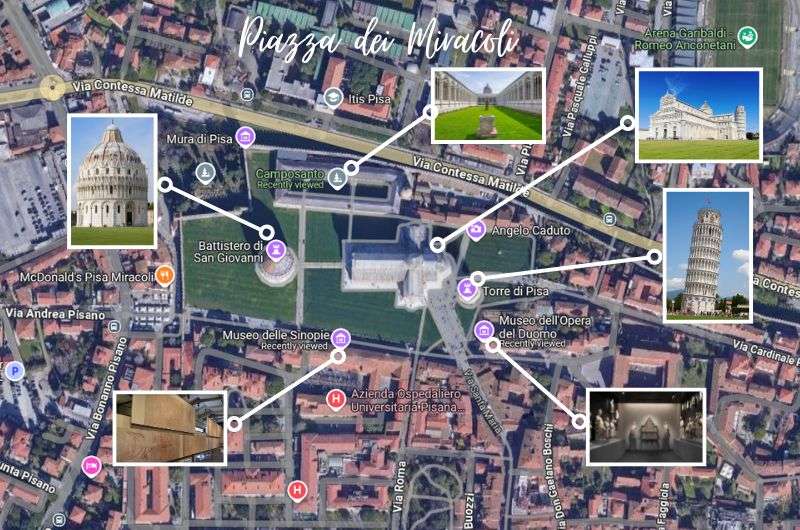
The main attractions in Pisa are all located on the Square of Miracles
Piazza dei Miracoli (Square of Miracles) reflects the historical might and wealth of the unchallenged and later challenged and beaten Pisan Republic.
After many visits, I've mapped out the perfect day that lets you see both the famous landmarks and quiet corners of Pisa.
Stop 1 of Pisa itinerary: Leaning Tower of Pisa (approx. 60 minutes)
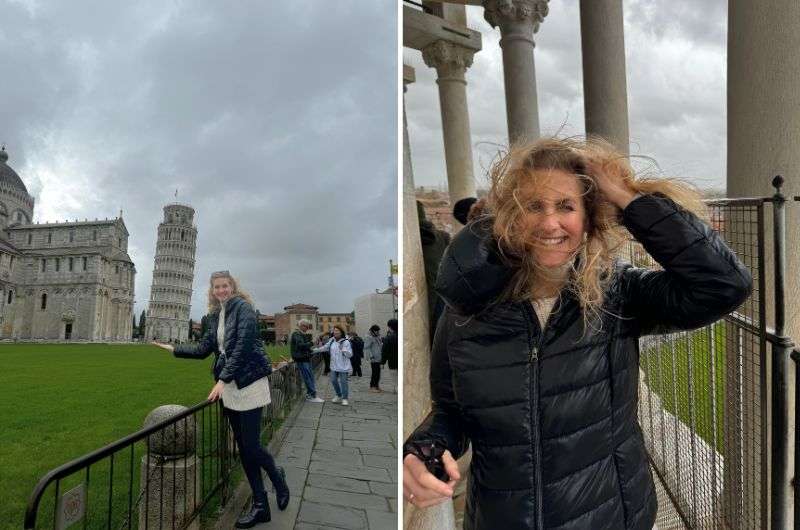
Leaning, laughing, and holding on for dear life in windy Pisa
The Leaning Tower of Pisa creates an optical illusion that's nowhere near as dramatic in photos as it is in real life. This 58-meter hollow structure has tilted 5 degrees since its construction started in 1173, and it looks like it could fall at any moment. I can tell you right away that 5 degrees is much more in real life than I was expecting.
When I was climbing up, I wasn’t sure the tower would hold up!
The climb itself was quite a challenge. The tower's tilt made me feel like I was walking through an illusion museum as I tackled all 294 steps. The crooked angles of the staircase made me dizzy, but this experience is unlike anything else in Italy.
During my last visit, the staircase turned into a natural wind tunnel as there was very strong wind, which added an extra bit of excitement to your climb.
Quick tips to help your visit:
- Get there 15 minutes before your scheduled time
- Don’t forget to visit the lockers well ahead to avoid stress during entering
- Have your digital ticket ready on your phone
- Don't lose your locker key during the visit
- Make sure to climb to the bell chamber—most people miss this part
- Pick a windy day to boost the atmosphere
- High fencing at the top keeps you safe while letting you enjoy the panoramic views. The climb will reward you with amazing views of Pisa's historic center and the Tuscan landscape.
Top tip: I think the best spot for taking the best photos is a bit to the right, in front of the Cathedral.
Stop 2 of Pisa itinerary: Cathedral of Pisa (approx 30 minutes)
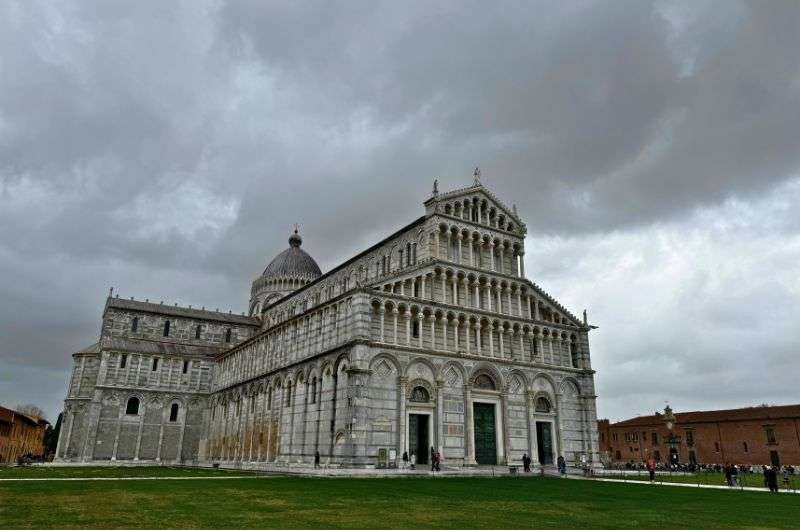
Cathedral of Pisa
Another monument that perfectly completes Piazza dei Miracoli is the Cathedral (Il Duomo), and I must admit that, for me, it’s at least as beautiful as the Leaning Tower. In fact, I’d even say it’s the prettiest cathedral in Italy—and that’s saying something in a country overflowing with stunning cathedrals!
A bit of history of Il Duomo
Built in 1118, it remains the oldest architectural wonder in Piazza dei Miracoli. As I expected, it’s dedicated to the Assumption of the Virgin Mary, like almost every other cathedral ever. But the cathedral's black-and-white striped columns show Islamic design influences that make it distinct from typical Italian churches.
Photo tip: Capture the view from the Baptistery or Porta Nuova.
The cathedral itself felt absolutely massive. Inside, it’s just as epic as the exterior. The striped black-and-white columns are incredible. Unlike most other Italian cathedrals, this one has a richly decorated ceiling and even some inscriptions, which is rare.
When to enter the Cathedral?
Visitors can explore until 8 pm, which makes planning easier. The extended hours let you avoid peak tourist crowds and quietly enjoy the cathedral's architectural beauty. Unlike the tower's restricted time slots, the cathedral welcomes guests all day.
Stop 3 of Pisa itinerary: Baptistery (approx. 15 minutes)
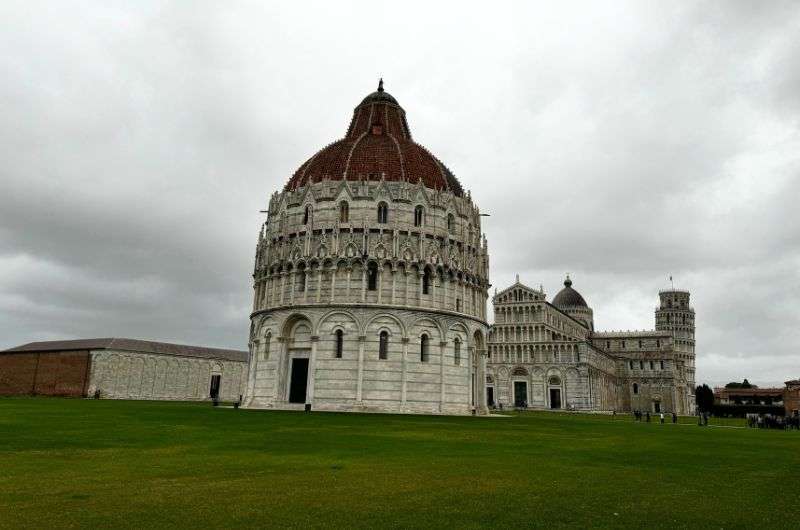
Baptistery
The Baptistery's beautiful exterior was the main attraction for me. Its upper balcony gives you amazing views of Piazza dei Miracoli. The inside isn't as fancy as the outside, and the ongoing reconstruction inside was also a downside.
The upper-level balcony is the star attraction, with its fantastic views of the cathedral and square. These high-up spots are perfect for photos, especially in the morning when sunlight lights up the white marble buildings.
A quick climb takes you to the balcony with its amazing views of Piazza dei Miracoli. From up there, you'll see how well the square's layout works and how all the grand buildings fit together. These views are now some of the most photographed spots in Pisa.
The Baptistery is part of the combined ticket that includes other monuments in the square (including the Leaning Tower). Some people might skip it, but its special features—from the cool acoustics to the panoramic views—help you understand Pisa's architectural heritage better.
Stop 4 of Pisa itinerary: Camposanto (up to 30 minutes)

Camposanto—epic frescoes, eerie vibes, and unexpected laughs
The Camposanto was a very pleasant surprise where I had a lot of childish laughs thanks to all the top-tier frescoes.
Like everything in Piazza dei Miracoli, it is included in your combined ticket.
The Camposanto's portico displays remarkable 14th-century frescoes that bring medieval life stories to light. Dante's Inferno fresco particularly stands out with its graphic medieval artwork— especially, for me, the devil pooping on people.
I explored this monumental cemetery in about 30 minutes. The site combines pretty Gothic porticos (compared to ones in Bologna, nothing special really) with stunning artistic works.
Camposanto's artistic program shows the deep spiritual beliefs of medieval times. The Heaven and Hell themed frescoes reveal how medieval artists tackled religious subjects head-on. These graphic portrayals powerfully reminded me how much they were skewed toward religion.
Top tip: Thanks to its symmetry, with columns on one side and frescoes on the other side, you will have the opportunity to take one of the best photos in Pisa.
Stop 5 of Pisa itinerary: Museo dell’Opera dei Duomo (30–60 minutes)

No lines, great artwork, and the best Leaning Tower photo spot at the end
Again, this stop is included in your combined ticket, and it's right behind the Leaning Tower.
I found that most visitors skip this museum, but I felt it was much better than the Sinopie Museum or Baptistery.
You can find original statues and even gates and other Renaissance artwork inside, with all the information in English.
Keep in mind that the museum has 2 floors and is pretty big inside. I spent about 1 hour inside, but if you are not as interested in the Renaissance as I am, you will breeze through in about 30 minutes.
If time and your plans allow, I recommend visiting this museum before going to the Cathedral because it gives you a lot of interesting information about the Cathedral itself. How it was built, designed, etc.
It is also a very convenient place to visit the toilets in the square, which was a big bonus for me.
Top tip: At the end of your tour, there is an internal garden and balcony from where you will be able to take one of the best photos of the Leaning Tower, and very much undisturbed by other tourists.
Stop 6 of Pisa itinerary: Fallen Angel and Sinopie Museum (20 minutes to 1 hour)

Fallen Angel
The Sinopie Museum might not grab your attention like Pisa's other sights—especially if you're not into fresco techniques, which, honestly, I'm not. But my OCD forced me to make full use of my combined ticket by visiting every single site included on it. So, I spent about 20 minutes there, and honestly, that was more than enough.
That said, art history buffs will be able to spend an hour here easily to learn all about the medieval fresco-making processes. You'll find preliminary sketches and studies that show the detailed planning behind Camposanto's famous frescoes.
The museum sits right in the square, making it easy to reach from other monuments. After you climb the Leaning Tower, note that you need to get your things from the lockers before coming here.
Fallen Angel statue
A Fallen Angel statue stands near the museum and the Leaning Tower, and it creates an interesting contrast with the religious buildings that dominate Piazza dei Miracoli. This modern art piece looked almost defiant among the medieval surroundings—like someone had dropped a piece of today's art into history.
It can be seen from the sidewalks around it, and there is no entrance. It is basically located in the middle of the grass and is very hard to miss.
Top tip: Managing your time becomes vital at this point in your Piazza dei Miracoli visit. Most people spend about 30 minutes in the Sinopie Museum, which leaves plenty of time to see other attractions before your ticket expires.
Pitstop on Pisa Itinerary: Lunch in the city center

Refueled in Pisa with local wine, buttery beef, and bread that disappeared way too fast
My appetite led me to find authentic Tuscan flavors in Pisa's charming streets after I visited Piazza dei Miracoli's treasures. Local trattorias are a great way to get genuine Italian dining experiences if you know some basic customs.
I can tell you right away—I found the best place to eat: Italian bistros. They looked seriously delicious, and the long lines of locals waiting to be served pretty much said it all.
I don’t have any particular recommendation since it depends on your taste at the moment, but I urge you to use Google Maps reviews to check for quality. There are bistros with anywhere between 1 to 4,7 stars that look all the same, but the quality can be really different once you get your food.
Note that restaurants in residential areas give better value and more authentic experiences than those near major attractions. Exploring beyond tourist zones rewards you with genuine Tuscan hospitality and better food.
Stop 7 on Pisa itinerary: Piazza Dei Cavalieri (max. 10 minutes)
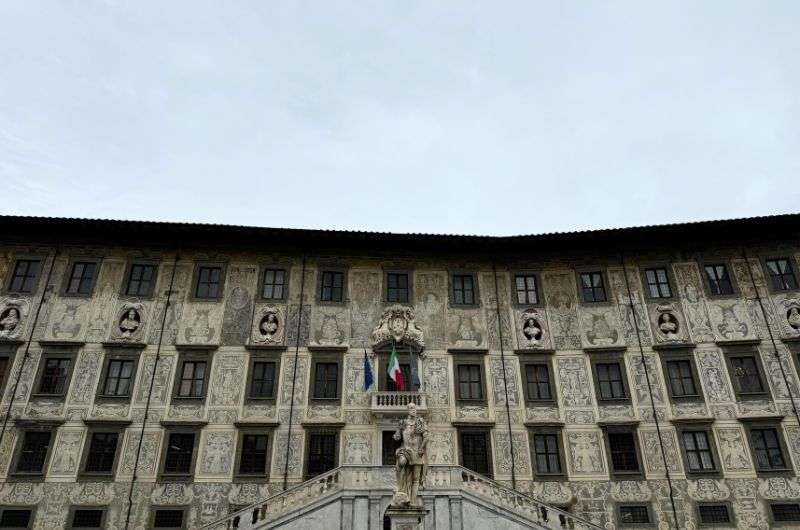
A quick pause at Pisa’s knightly square—great details, zero crowds
This Renaissance square sits peacefully between the busy Piazza dei Miracoli and the quiet Arno River, away from tourist crowds. A 15-minute walk from the Leaning Tower leads through charming medieval alleys. Each step reveals real Italian life, from students hurrying to class to locals going about their day.
The square's central location makes it perfect to visit between morning monuments and afternoon river walks. Evenings bring a special change as tourist crowds fade away. The surrounding streets buzz with local energy, showing today's Pisan life against beautiful Renaissance architecture.
I visited mainly because of the name, as for some reason I have the word ”cavalieri” connected with Don Quixote, which I very much like.
Fun fact: Bloggers like to call Piazza Dei Cavalieri a rival to Venice and Florence. But it so isn’t. It's just a square... a pretty one, though.
Stop 8 on Pisa itinerary: Arno River Walk (1 hour or more)
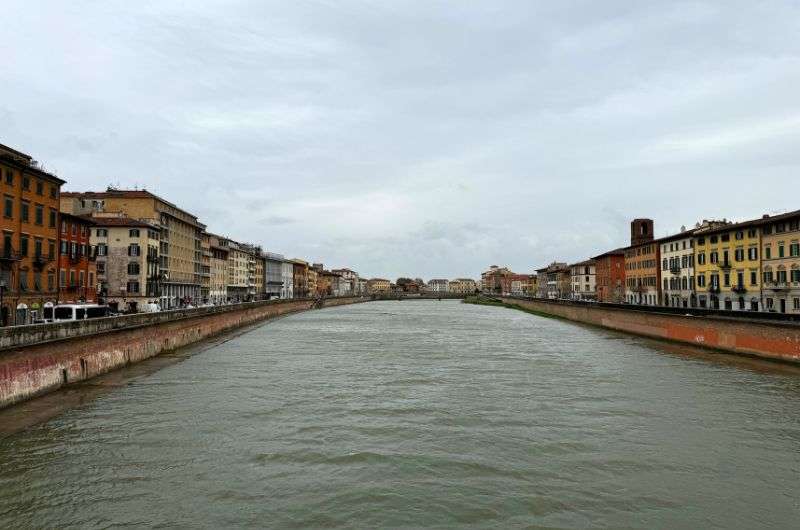
A slow stroll along the Arno—Pisa’s most relaxing view
The Arno River promenade shows Pisa's true character with views that reminded me of Venice but without the crowds. This riverside path tells stories of the city's seafaring past. Pisa was once a major port until sediment slowly pushed it inland.
Historical fun fact: I could easily imagine ships sailing up the river here, given the width of the Arno. Back in the 12th century, it was also a lot closer to the sea. Over the centuries, the city gradually moved inland—now more than 20 km (12.5 mi) from the coast—due to the sedimentation from the river Arno that once gave Pisa its power.
You can walk from Piazza dei Miracoli to the river in just 15 minutes through the charming Borgo Stretto. Most visitors take their time as they walk this route. Life in narrow medieval alleys engages them with authentic Italian moments. Laundry hangs from windows while students hurry between classes. Local life flows naturally away from tourist spots.
At the riverbank, you can just walk between the bridges for as long as you want. But fair warning: the river is wide, and the bridges are long. If you're chasing a step count on your smartwatch, you're in for some serious gains here..
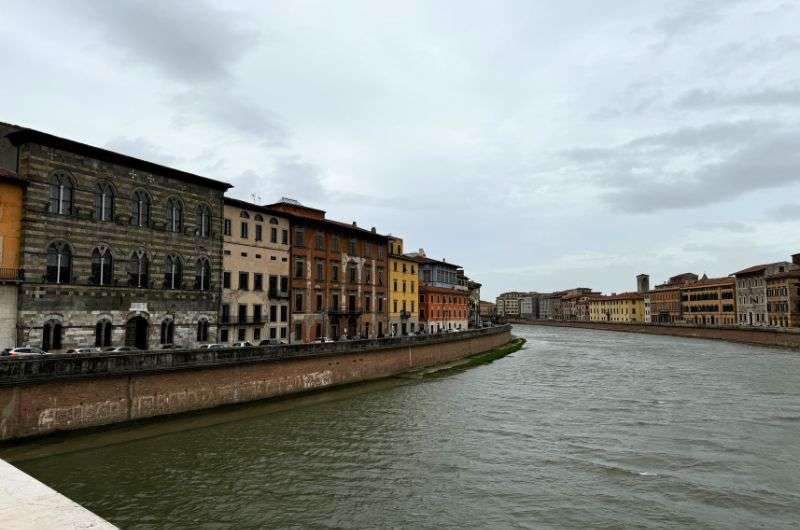
Pisa’s “hidden gems.” Not hidden. Not gems. Still,… kinda nice
Pisa’s not-so-hidden gems
“Pisa has more to offer than its famous landmarks. The city's hidden treasures reveal authentic Italian life and rich cultural heritage away from tourist crowds.” This is a sentence I would write if I were a casual blogger, but in reality, the places are not hidden and are mostly not even treasures. They are okayish at best.
Stop 9 of Pisa itinerary: Santa Maria Della Spina
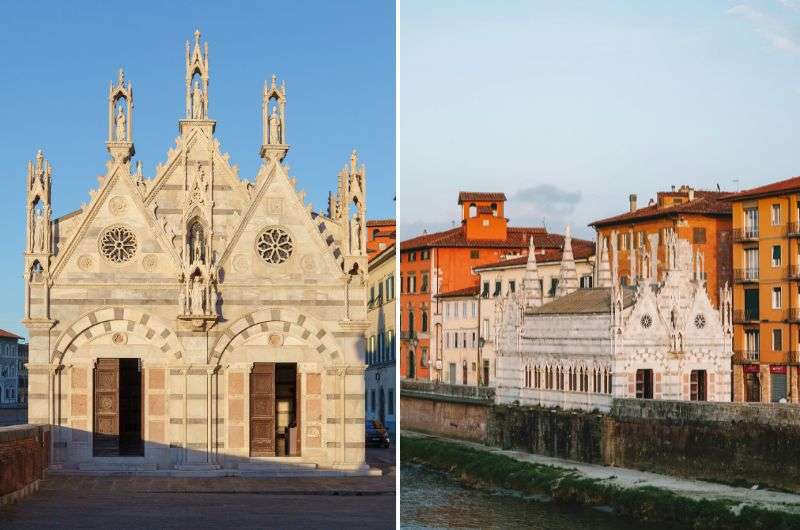
Santa Maria Della Spina
This Gothic church stands quietly by the Arno River. Most tourists miss this as they rush between major attractions—and, honestly, that’s understandable. The church's architecture matches its more famous counterparts, but you won't find the crowds here. Its riverside location connects you to Pisa's maritime past, when ships once sailed right past its walls.
Stop 10 of Pisa itinerary: Borgo Stretto
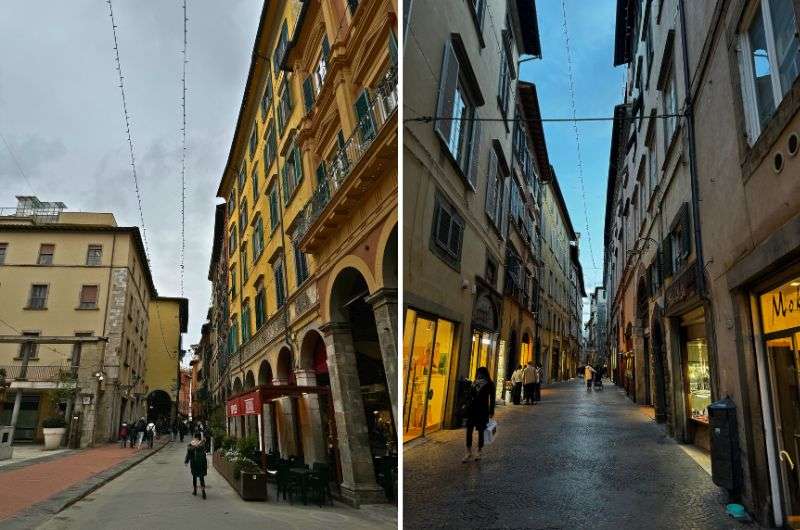
Borgo Stretto
Medieval Pisa comes alive in this elegant street with its stunning arcades and historic buildings. Each facade tells stories from centuries past. The street's character changes throughout the day. Morning shoppers make way for university students, and the evening brings locals out for their traditional passeggiata. Classic Pisa.
I actually liked this street as it had this special dirty Italian vibe.
Stop 11 on Pisa itinerary: Chiesa Di Borgo
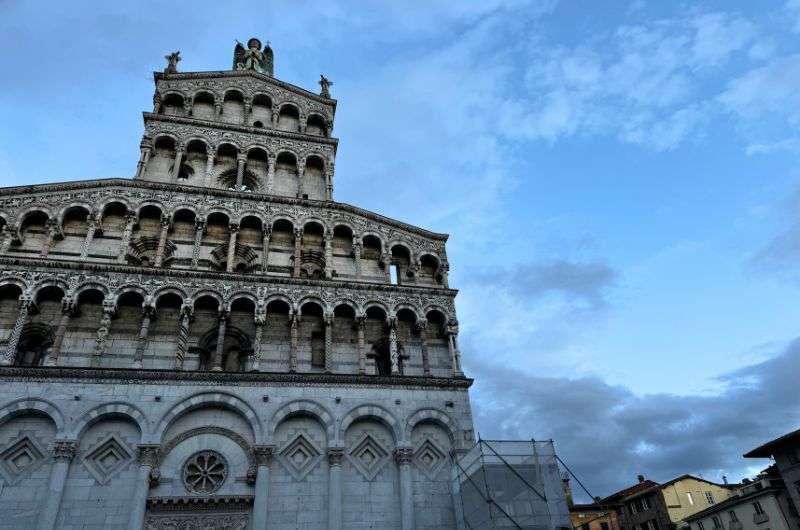
Chiesa Di Borgo
Chiesa di Borgo sits well off the tourist trail and proves Pisa’s architectural diversity goes way beyond the famous tower. Its beautiful design deserves just as much attention, but you won’t find crowds here. It’s the perfect spot for a quiet moment away from the city’s buzz.
Bonus stop on Pisa itinerary: Pisa’s eaboard and beaches
This stop on my Pisan itinerary was a real (good) surprise. It’s probably only doable if you have your own car, but boy, is it worth it! You’ll need to drive about 20 km (12.5 mi) to reach the sea, where you’ll find a beautiful promenade, a long boardwalk, and classic Pisan beaches. The vibe here is completely different from Pisa itself—and for some reason, I found it incredibly calming.
Story time: When we got to the seaboard, there was really strong wind, and by that I mean car-door-breaking winds—no, really, my car door almost broke. I saw one of the biggest waves of my life there. It was so strong that it was throwing pebbles weighing anywhere from 0,5 kg to 1 kg at the sidewalk, my car, and, you know, windows and stuff. It had this post-apocalyptic Pisa Renaissance feel that I really loved. You can hardly recreate that, but you never know if you’ll be lucky and get a windy day!
Final thoughts
Pisa amazed me with layers of beauty that extend not very far beyond its famous leaning tower. This enchanting city has proven itself worthy of more than a quick photo stop through my numerous visits.
Before I visited for the first time, most people told me Pisa is meh. But I found Piazza dei Miracoli at least a 12/10 and count it among the best places you can see not only in Italy but in the world.
Combine that with my absolutely crazy post-apo experience from the seaboard, and you have one of my best experiences of more than 10 trips to Italy.
Other attractions are mostly mediocre, though, like 5/10.
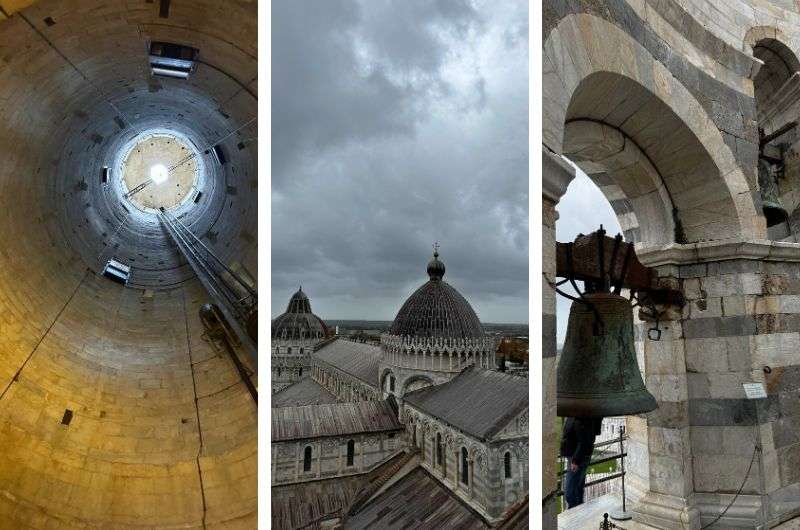
Final thoughts: Pisa? A wild 12/10 at the top, a stormy post-apo coastal twist, and a solid 5/10 for the rest. Still, it was one of my favorite Italian trips
What's the best time to visit Pisa?
The ideal time to visit Pisa is during fall or spring. These seasons offer mild weather and fewer crowds, allowing for a more enjoyable experience. For the best rates and a more authentic atmosphere, consider visiting between November and March.
How long does it take to explore Pisa's main attractions?
Most of Pisa's main attractions can be explored in one day. The combined ticket for the Piazza dei Miracoli monuments is valid for three hours, which is usually sufficient to see the Leaning Tower, Cathedral, Baptistery, and Camposanto. Allow extra time for lunch and exploring the city center.
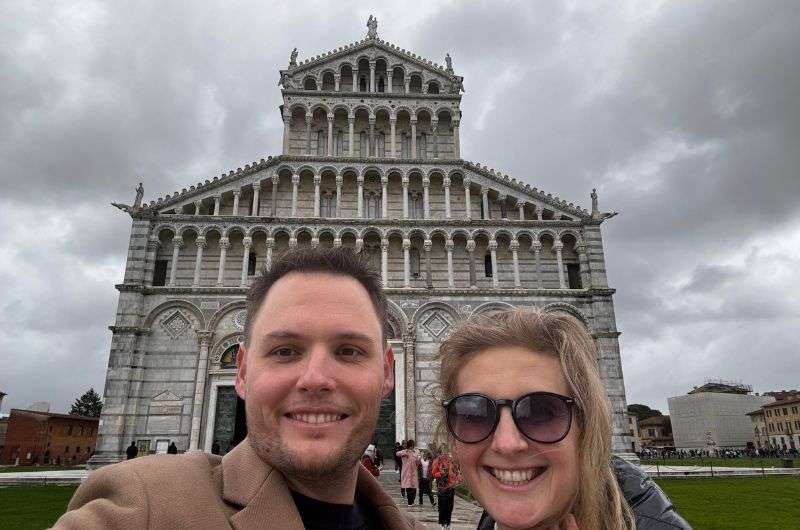
See you in Pisa...
Is it necessary to book tickets in advance for the Leaning Tower?
Yes, it's highly recommended to book tickets for the Leaning Tower at least a month in advance, especially during peak seasons. The tower has strict visitor limitations, and time slots fill up quickly. Booking ahead ensures you get your preferred visiting time and avoids disappointment.
What's the best way to get around Pisa?
Walking is the best way to explore Pisa. The city center is compact, with most attractions within a 20-minute walking radius. This allows you to experience the charming medieval streets and discover hidden gems along the way. For those arriving at the airport, the PisaMover shuttle provides easy access to the city center.
Are there any lesser-known attractions worth visiting in Pisa?
Absolutely! While the Leaning Tower is famous, Pisa offers many hidden gems. Consider visiting the Santa Maria Della Spina church along the Arno River, exploring local markets, strolling down the elegant Borgo Stretto, or discovering the Chiesa Di Borgo. These spots offer a glimpse into authentic Pisan life away from the tourist crowds.
Sometimes, all you need to do is take the first step... I've filtered out the best hotels in Pisa for you
Save it for yourself to come back to later, or share with your friends on social media!
This post contains affiliate links. If you make a booking through one of my links, I may earn a small commission—at no additional cost to you. Thank you for your support!




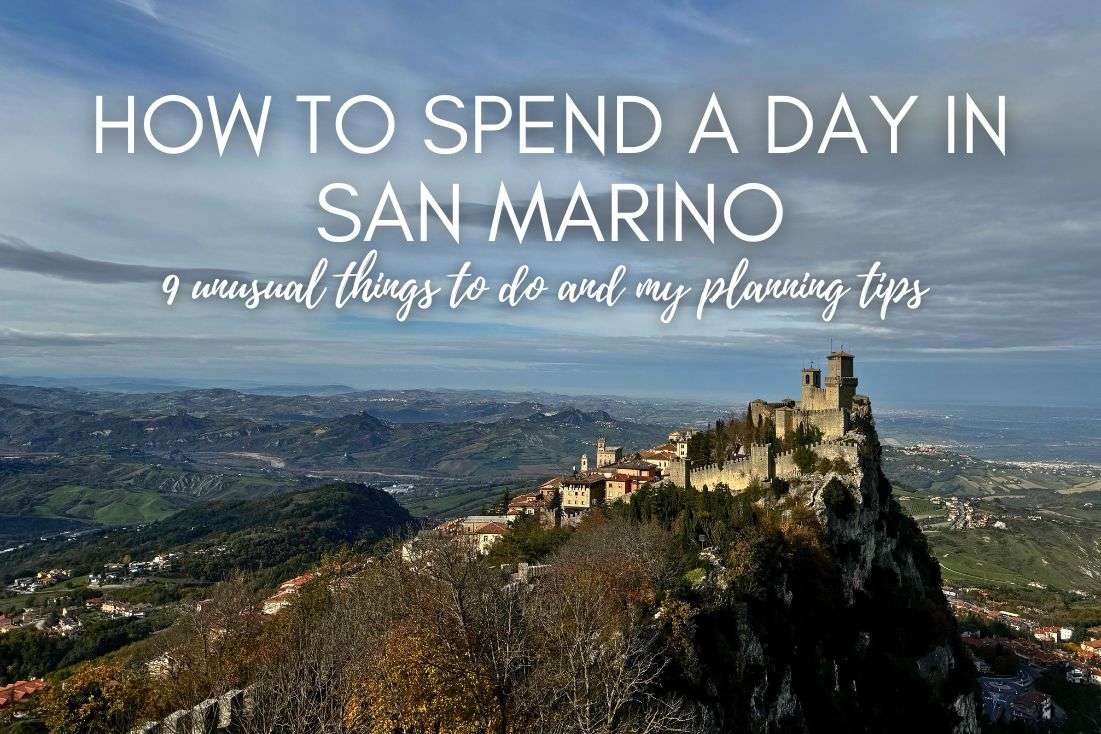
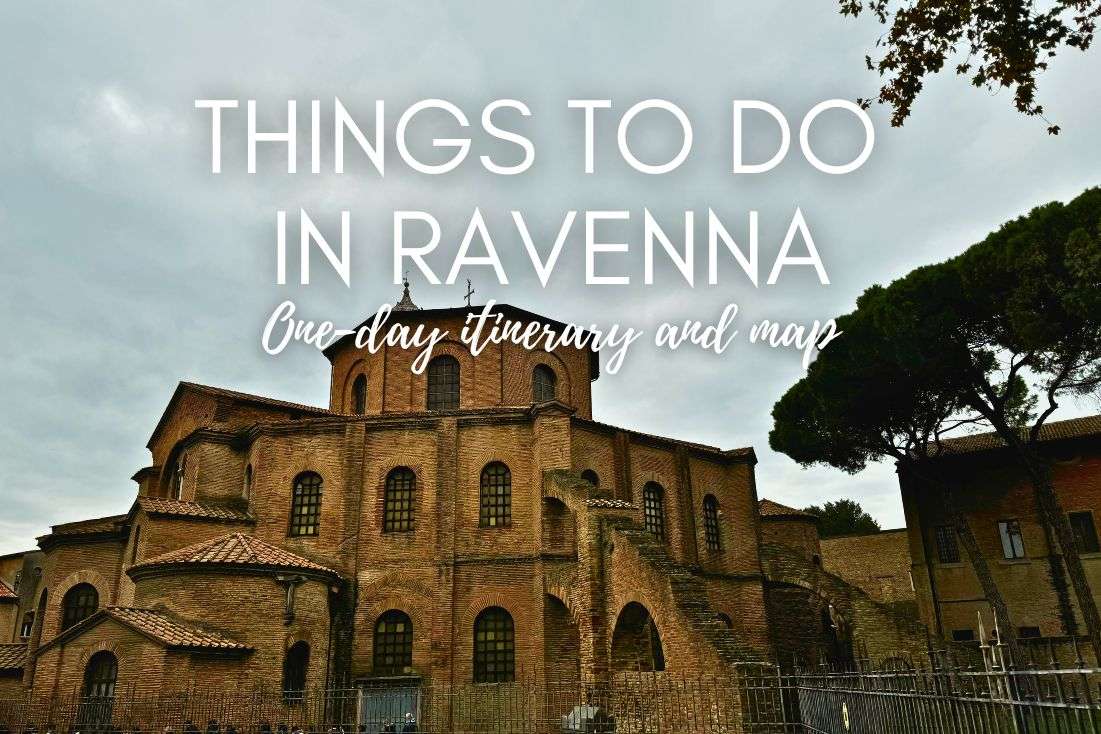




Comments | Thoughts? Give us a shout!